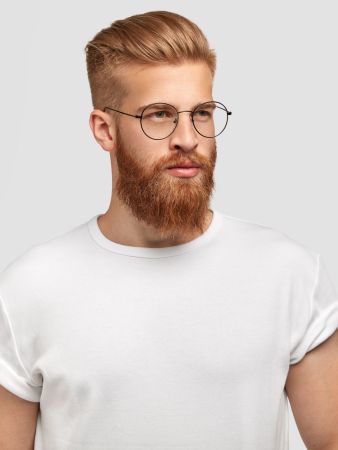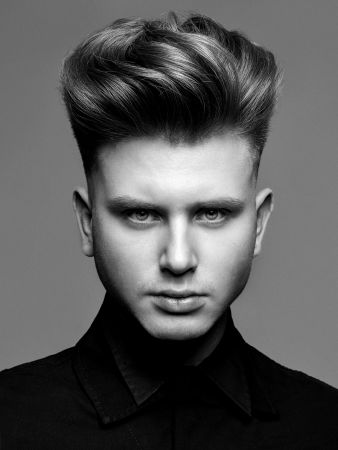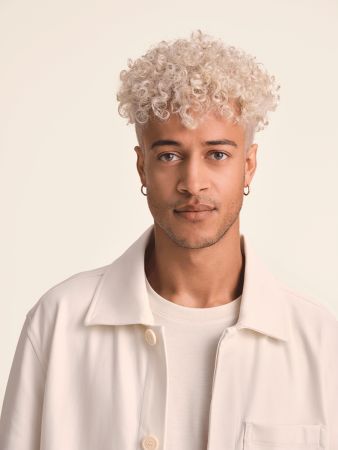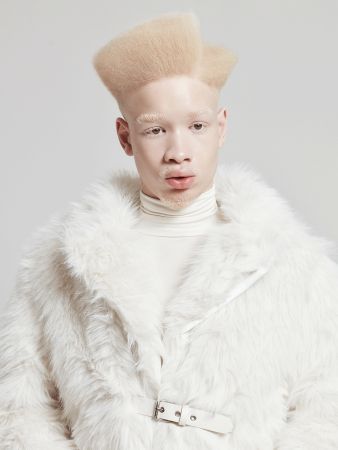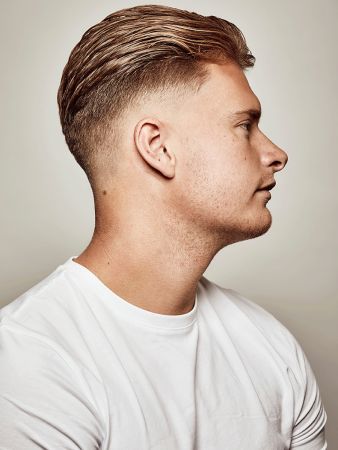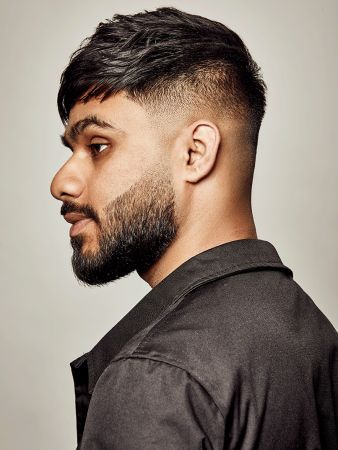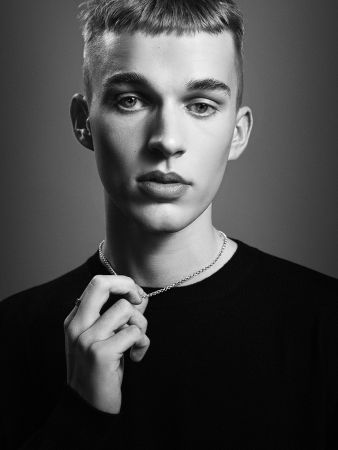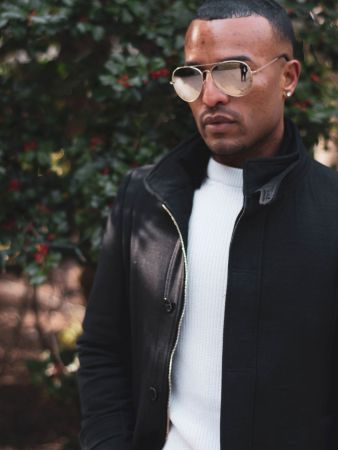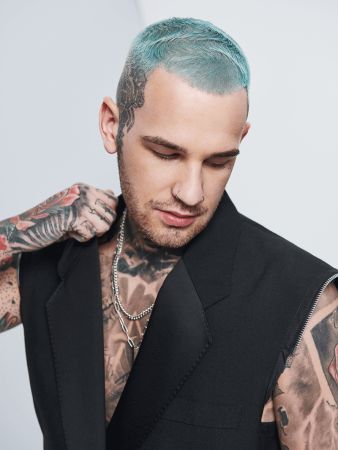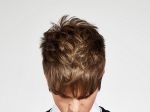Taper Fade Men's Haircut " Low, Mid & High
The taper fade is one of the most popular men's hairstyles. And it has been for years.
New variations are added every year, which is exactly why taper cuts are popular worldwide. In this article, we provide an overview of what you need to know about the taper fade.
What is a taper fade haircut and where does it come from?
The taper fade is a haircut that is characterised by smooth transitions and a skilful hair flow . It has its roots in the world of classic barbering.
Originally, the taper fade was a popular cut for Afro hair, cultivated by barbers in the USA. The US armed forces also claimed the look for themselves: after the Second World War and the Korean War, soldiers returned with short sides and longer top hair . After a wave of long hair trends for men, the taper fade then returned in the 80s and 90s to stay. Today, the look is a timeless classic.
What is the difference between fade and taper?
The taper fade is a mix of taper and fade. At this point, it makes sense to briefly explain the difference between the seemingly similar taper and fade hairstyles:
In a taper haircut, the hair length gradually decreases from top to bottom. The transitions between longer and shorter hair are natural and without hard edges.
The sides and back of the head become shorter the closer they get to the neck.
The fade haircut is the more contrasting hairstyle of the two. The hair is significantly shortened from top to bottom. The shortest hair length is often shaved to "0" down to the skin. There are low fade, mid fade, high fade and skin fade styles. These differ in the height and intensity of the transition.
Which hairstyle is suitable for whom?
Taper haircuts are generally less conspicuous and more of a classic style. Perfect for men who like a classy look and have full hair. The fade haircut , on the other hand, looks more modern as the contrast between the hair lengths is stronger and looks like this are more striking. A hairstyle for younger, funkier types. The taper fade, i.e. the mix of both, is not just one look, but a variation of different styles. It is suitable for work, when things are formal, as well as for parties and leisure time. The most important thing is that the hairstyle is always styled in shape and has not grown out.
Who suits a taper fade?
The great thing about this look is its versatility. The barber or hairdresser can cut the lengths perfectly to suit different face shapes and hair types. However, hairstyles with hard transitions (high taper fade) should be left to the young. Taper haircuts are ideal for round or angular faces: the contoured sides and back of the head ensure balanced proportions for men and the face is visually elongated. Men with elongated or oval face shapes benefit in that the barber can create the taper fade in such a way that a visually balanced look is created. There are more suitable hairstyles for triangular face shapes. Here there is a risk that the wide temple area will be emphasised even more by a taper fade.
How is a taper haircut created?
The taper fade owes its popularity to its versatility. There are different variations of this cut, ranging from the position of the transition (low, mid, high) to specific textures such as curls or straight hair. The taper fade is achieved with precision using clippers and/or scissors. The trick is to create a seamless transition between hair lengths that defines the overall look of the cut. This definitely requires a hair professional. Creating transitions yourself and, above all, making the back of the head look professional can hardly be achieved in do-it-yourself mode.
The 5 most common variations of the taper fade haircut
- Low taper fade: With this style, the transitions are less pronounced and tend to start at the hairline. The low taper fade is a subtle variation with soft transitions. The look starts at the ear, follows the hairline and ends at the nape of the neck. The contrast is not as strong as with other taper fades. Perfect for oval and round faces.
- Mid taper fade: The transition starts at the centre of the head. The mid taper variant suits almost every hair type. Two adjectives describe the mid taper fade: stylish and loose. The look is more exciting than the low version and yet still more tame than high taper haircuts. Anyone with a lot of hair or wavy hair will benefit from the mid taper as it reduces styling time. For fine hair, the gradual transition provides visual fullness.
- High taper fade: Here, the transitions are higher on the head, resulting in a more striking contrast. The high taper fade is therefore the hairstyle with the strongest contrast. The resulting striking lines are something for men with self-confidence. The high transition from the longer top hair to the shorter side sections visually shortens the face and is therefore ideal for oval or elongated faces. A high taper fade is also a good combination with voluminous hairstyles such as the pompadour.
- Taper fade with curls: Taper fades are particularly popular with curly hair as they emphasise the natural texture of the curls. The sides and back of the head are also short here. The curly taper fade offers a cool contrast through the interplay of short sides and curly top hair. If you don't have curls, you can consider a perm - a look that is extremely popular with young people.
- Taper fade mullet: A modern twist on the classic mullet with a smooth transition between the hair lengths: The evolution of the taper fade can be seen in its adaptations to different trends and styles. For example, in combination with a mullet. The mullet is the English name for the 80s mullet and is characterised by a combination of short top hair at the front and longer hair at the nape of the neck.
Care of the taper fade haircut
This men's hairstyle is absolutely low-maintenance. Regular washing and conditioning are important to keep the hair healthy. The right styling products should also be used to achieve the desired look. In summer, care should be taken to protect the skin from sunburn due to the short sides and back of the head.
How do you style the taper haircut?
Styling is easy as the sides and back of the head are usually ultra-short. It also saves valuable time in the morning. Hair wax or hair gel are best suited to styling the taper fade. Whether it's gel or wax depends on the hair structure and personal preference. You only need a small amount of both. Apply gel or wax to the palms of your hands (this warms up the wax and makes it smooth), rub it in and work it into the hair. For curls, so-called curl taming products have proven their worth. All products should be used sparingly so as not to make the hair look sticky or heavy.
Permanent card for re-cutting
A short haircut that has grown out is never a good idea. That's why you should go for regular trims. This keeps the look in shape and always looks well-groomed. The taper fade haircut requires precise re-trimming due to the graduated lengths. How often you go for a trim depends on how quickly your hair grows. On average, this is every two to four weeks.
How long does a taper fade take?
The time spent in the hairdresser's or barber's chair varies depending on the hair structure, length and skill of the professional. On average, the cut can take 30 minutes to an hour. For hygiene reasons, good barbershops and men's hairdressers no longer offer dry haircuts. This is another reason why you should allow a little more time.
Conclusion: You can't go wrong with a taper fade. If you bring a few pictures with you to your hairdressing appointment, the barber or men's hairdresser will know what look you want and can then discuss various options.

